Controls:
Ag1 - Arm Speed brakes (requires gear down)
Ag2-4 - Strobe/Landing/Cabin Lights
Ag5 - Open front left door (Requires not moving)
Ag7 - Open Cargo door (Requires not moving)
AG6 - Pushback
AG8 - Engines, Nav/Taxi/Beacon lights
About HeavyLift Cargo:
HeavyLift Cargo Airlines Pty Ltd was an Australian cargo airline headquartered now in Los Angeles, United States. It started operations in 2004 and operates scheduled and charter cargo services. HeavyLift took over passenger airline OzJet in 2008. HeavyLift sold Ozjet and its passenger aircraft to Air Australia in 2009. Heavylift transferred its business to the United States once the Australian Government banned B727/737 stage III aircraft.
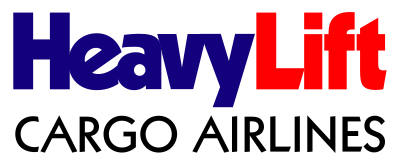
Heavylift's Belfast is registered in the Philippines as RP-C8020

Heavylift's Belfast is registered in the Philippines as RP-C8020
As of November 2010 the Heavylift Cargo Airlines fleet consists of:
1 Boeing 727-100F Retired
2 Boeing 727-200F Retired
1 Short Belfast Retired
4 Douglas DC8-71F Current
The Belfast is now stored at Cairns Airport. During 2006 work was also underway at Bournemouth Airport to refurbish another aircraft once operated by HeavyLift's unrelated namesake UK airline, the unique Conroy CL-44-0; however it has been reported on various aviation internet message boards that this aircraft will not be delivered. A feature of the airline is that most of its aircraft are not registered in Australia, but in the Philippines.
In May 2008 Heavylift bought passenger airline OzJet giving it access to an Australia air operator's certificate. Ozjet discontinued passenger operations in May 2009.
About The 1994 Kai Tak Incident:

Hercules aircraft PK-PLV and the operating and positioning crews were deployed from their home base in Jakarta, Indonesia, to Hong Kong on 21 September 1994 to carry out a contract for Heavy Lift Cargo Airlines. The contract involved making one return trip from Hong Kong to Hanoi on 22 September and another on 23 September to transport Vietnamese illegal immigrants in Hong Kong back to Vietnam. The crew involved in the accident flight had operated the return trip on 22 September and had rested on 23 September while the other crew operated the flight to Hanoi earlier that day. When PK-PLV arrived back in Hong Kong at 17:35 hrs on 23 September 1994, the operating crew were relieved by the rested crew for the flight back to Jakarta. The captain who took over was verbally informed by his predecessor that there were no problems with the aircraft. The ground mechanic fully checked the aircraft and had it refuelled to give a total of 45,000 lb fuel on board.
With both crews back on board, the captain started the engines at 18:31 hrs. The start was normal and at 18:49 hrs he used reverse thrust to back out from Bay 78 to position on the taxiway. The captain then taxied to the holding point at A1, for a takeoff on runway 13. The time taken to reach the holding point was approximately 18 minutes. This was partly due to the pilot's unfamiliarity with the taxy route and partly to a delay of some six minutes to give way to another aircraft. During the ground movement, the captain completed the normal taxy and before takeoff checks. He also gave a takeoff briefing to his crew. After a delay of 2,5 minutes at the holding point, he was cleared by Air Traffic Control (ATC) to line up on the runway behind landing traffic and wait.
PK-PLV was subsequently cleared for takeoff at 19:14 hrs, two minutes after the traffic had landed. At that time it was already dark with a visibility of 9 Km. There was light rain and the runway was wet. The surface wind was 090°/12 kt. The captain in the left seat was the handling pilot and both the first officer and Flight Engineer occupied their normal seats. Also in the cockpit were four other personnel. The captain of the positioning crew was in the observer's seat and the positioning first officer, another positioning crew member and the Senior Purser/Air Loadmaster were seated on the bunk at the rear of the cockpit. The other five personnel occupied seats in the passenger compartment.
After the aircraft lined up on the runway the captain held the aircraft on the wheel brakes while setting 5,000 in-lb of torque on all 4 engines. As this power figure was achieved he made a check of the engine instruments before releasing the brakes and applying full power. To the occupants of the aircraft the takeoff seemed normal, although two external observers commented that the acceleration seemed slightly slow for a Hercules. When the first officer called "70 kt", the captain moved his left hand from the steering tiller to the control column. The first officer made the normal takeoff calls of " V1", "VR" and "V2" The captain rotated the aircraft at VR and, after the first officer had announced "positive rate", he called for "gear up". He saw the first officer reach for, and move the gear lever. Then he heard "a high pitched noise" from his right and found that he was applying left aileron because the aircraft was banking right. Looking at the engine instruments, he noted that No. 4 RPM was indicating higher than normal and that No. 4 Turbine Inlet Temperature (TIT) was reducing slowly. The captain recalled his airspeed at that time to be about 122 or 123 kt and he was by then applying left rudder and full left aileron. The aircraft kept turning right and started buffeting. The captain tried bringing No. 1 throttle back a little to stop the turn but this action had no apparent effect. He then called "Take action for No. 4", but there was no confirmation that any remedial action was attempted by any of the other flight crew members.
As the aircraft continued on its right turn at very low altitude its right main gear briefly contacted the grass strip adjacent to the runway. It finally impacted the water 500 metres off-shore in Kowloon Bay on a southerly heading, with some right bank and in a nose low attitude. As the aircraft gradually submerged, 2 life rafts came to the surface and were utilised by the 7 occupants who had managed to escape. Of these 7 survivors 1 died before arrival at hospital. The remaining 5 occupants were later found drowned.
CAUSAL FACTORS:
- The No. 4 propeller entered the Beta range shortly after the aircraft became airborne.
- The crew were unable to retain control of the aircraft following this occurrence.
Specifications
General Characteristics
- Predecessor L-100-30 (NEED HELP WITH THE STABILIZER LOGO)
- Created On Android
- Wingspan 121.2ft (37.0m)
- Length 111.6ft (34.0m)
- Height 42.1ft (12.8m)
- Empty Weight N/A
- Loaded Weight 105,805lbs (47,992kg)
Performance
- Power/Weight Ratio 0.509
- Wing Loading 23.6lbs/ft2 (115.0kg/m2)
- Wing Area 4,492.6ft2 (417.4m2)
- Drag Points 29738
Parts
- Number of Parts 433
- Control Surfaces 10
- Performance Cost 2,287

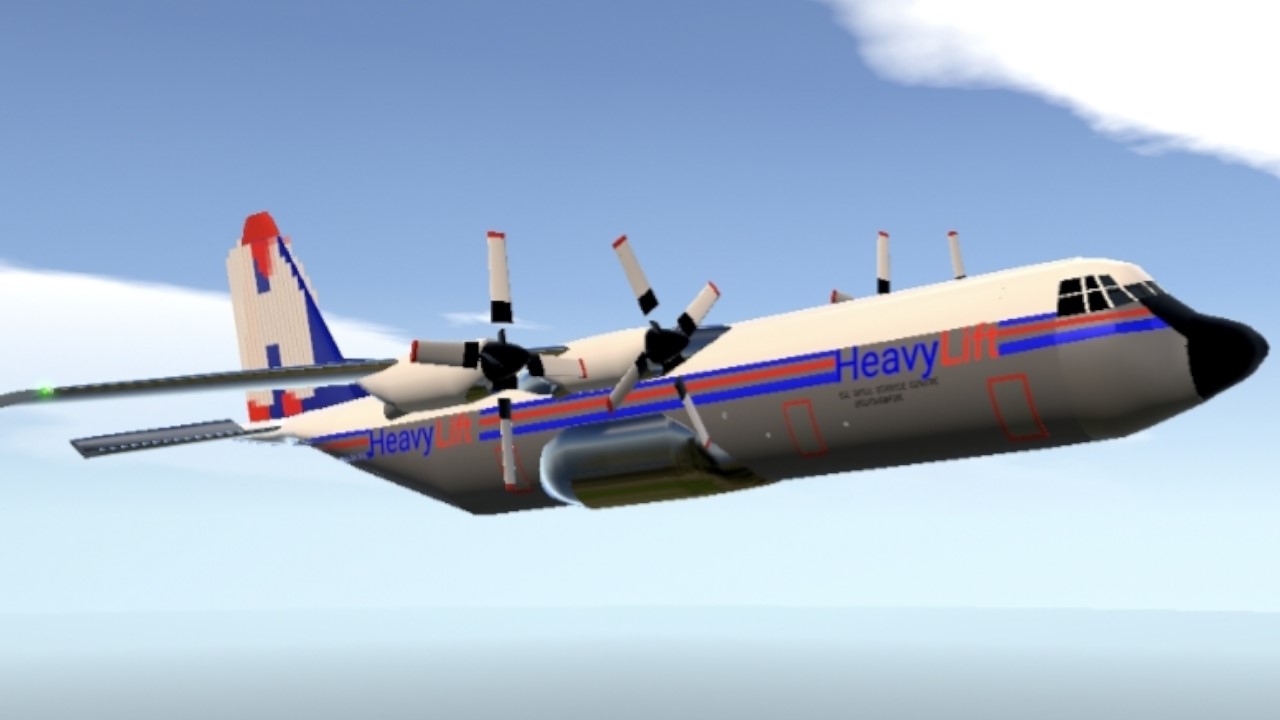
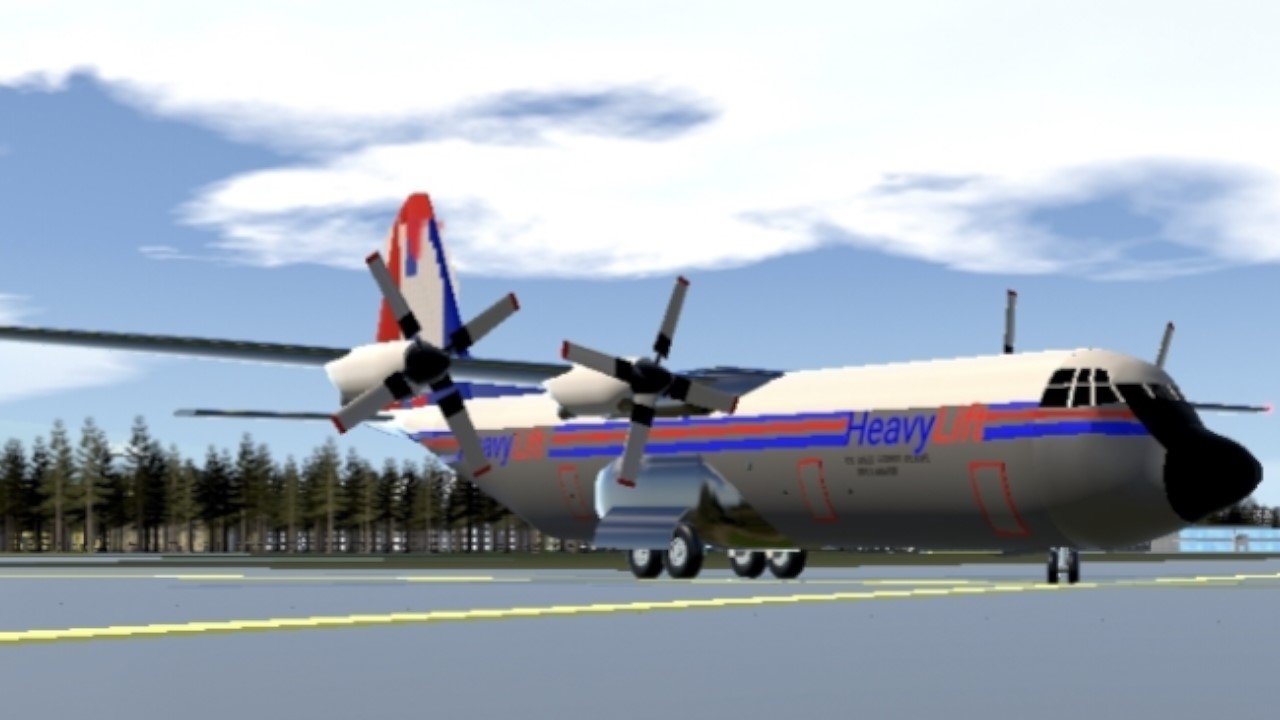
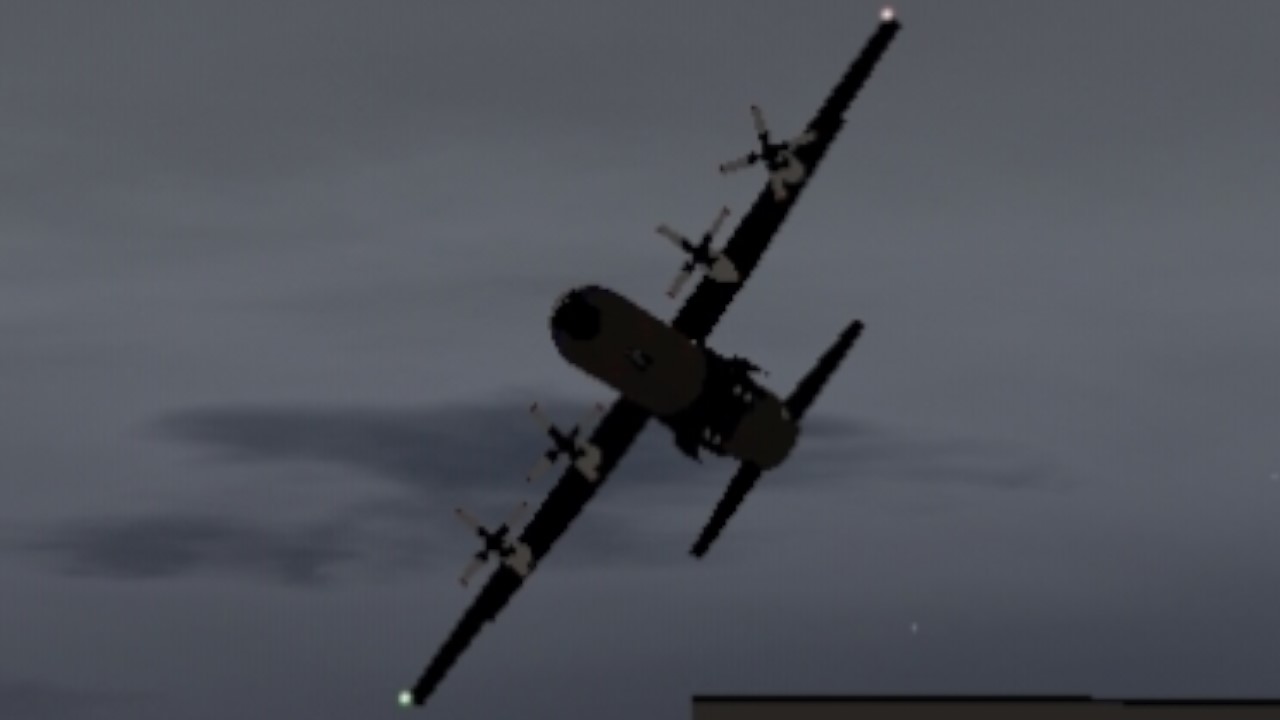

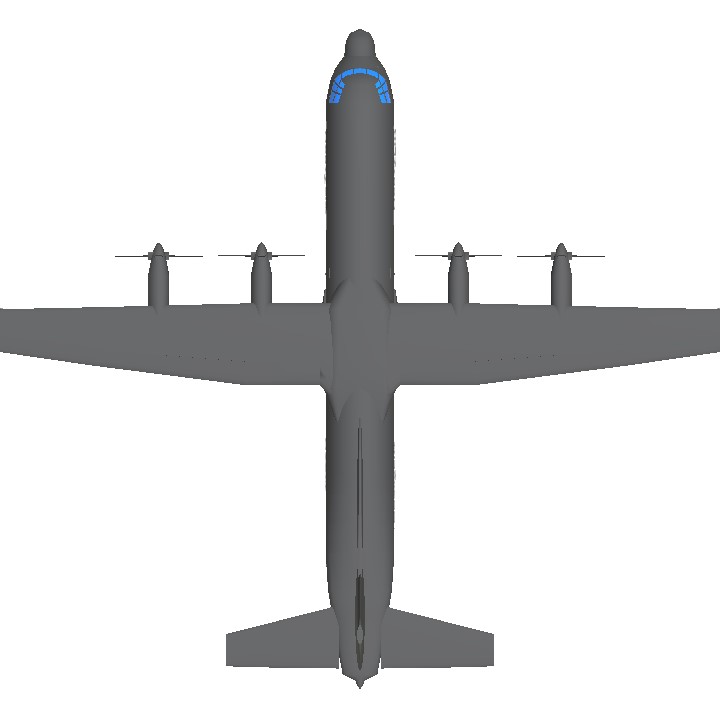

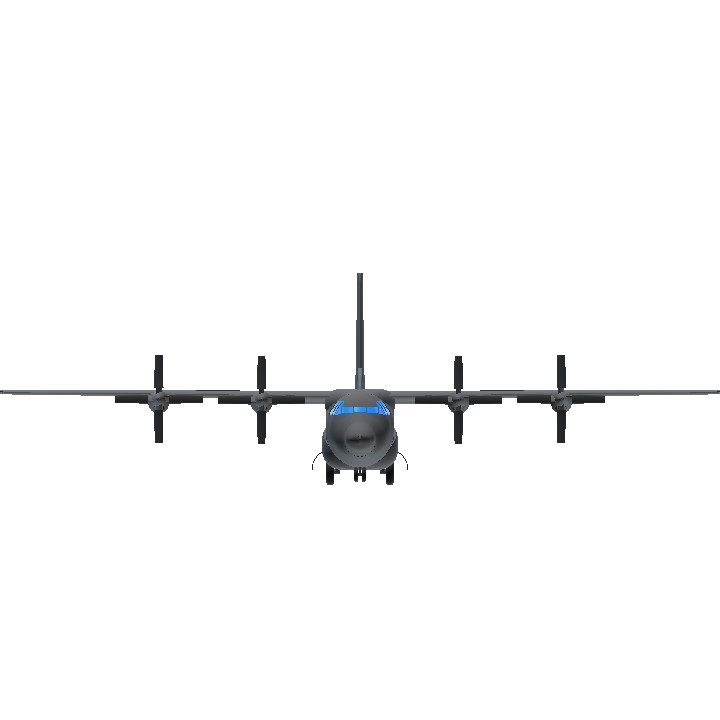
And yes, im very lazy to use fuselage cheatlines on the vertical stabilizer, so i mostly use logo labels.
Is this fake?
Now this is epic 🔥🔥
@DarksideYToffical this is over 30 meters long
@DarksideYToffical btw prob just ur camera or phone tbh
@DarksideYToffical bro how do you expect me to make it bigger 😭🙏
@AverageFedExMD11 can you make it bigger, this is like RC size tbh,
i lik dis plen